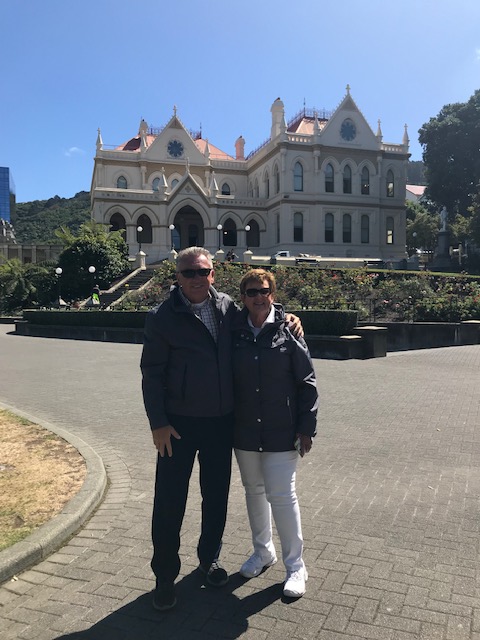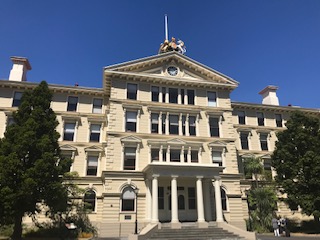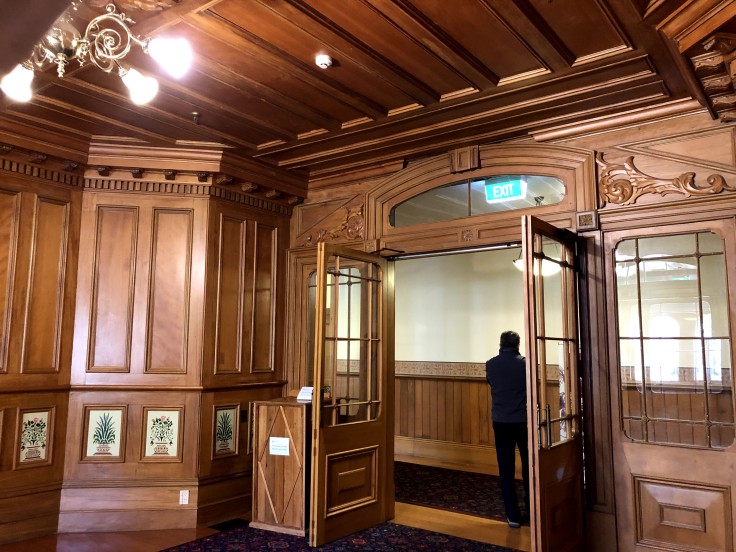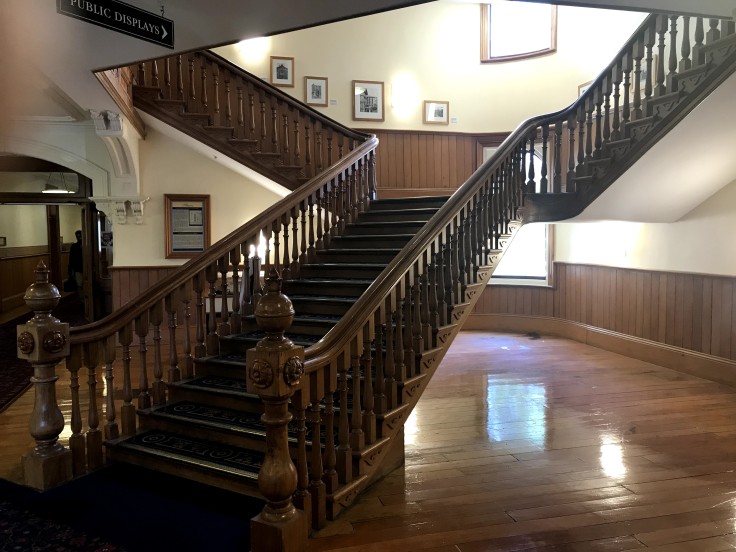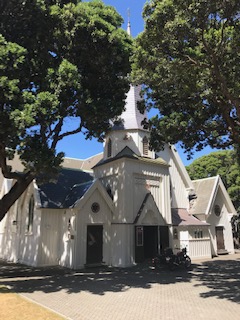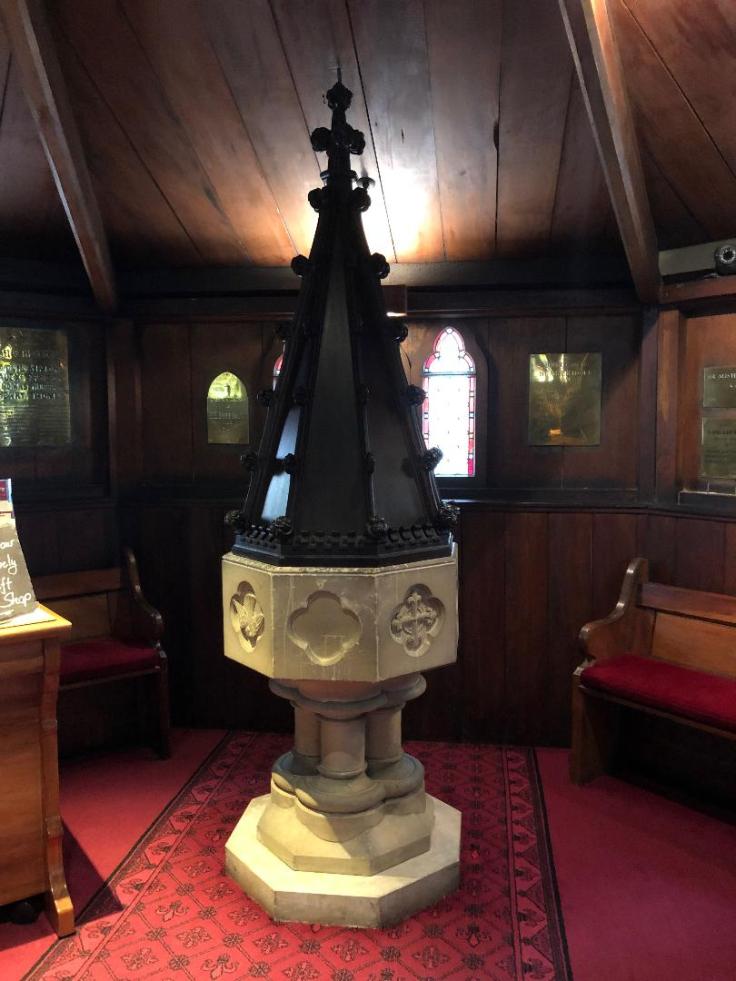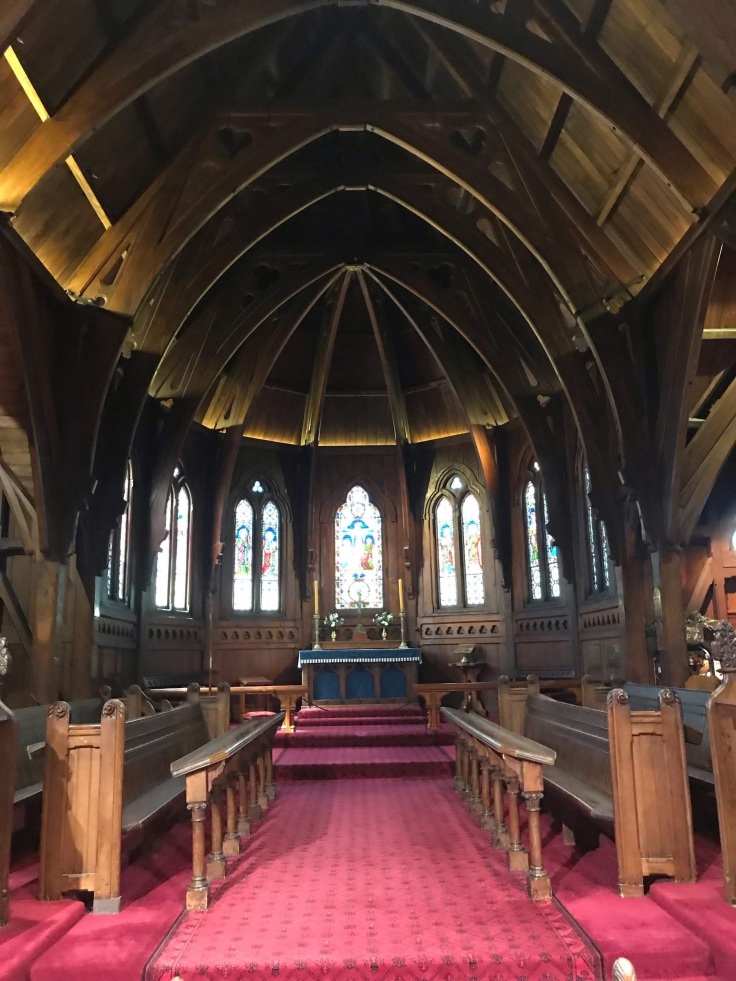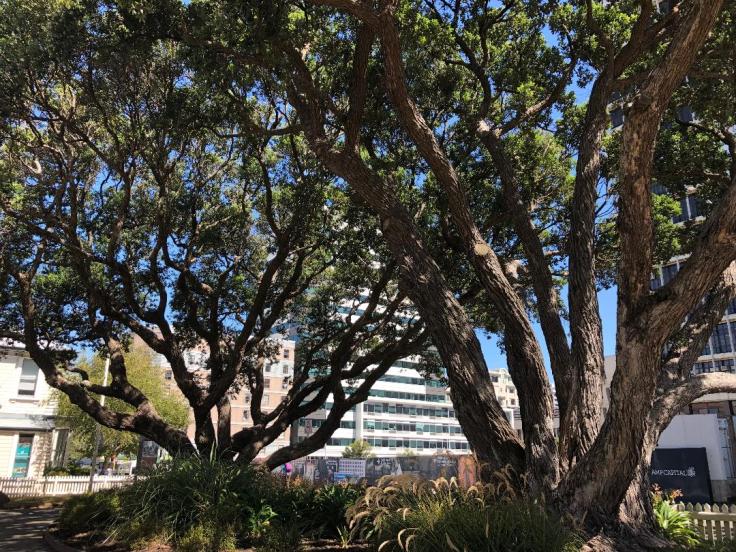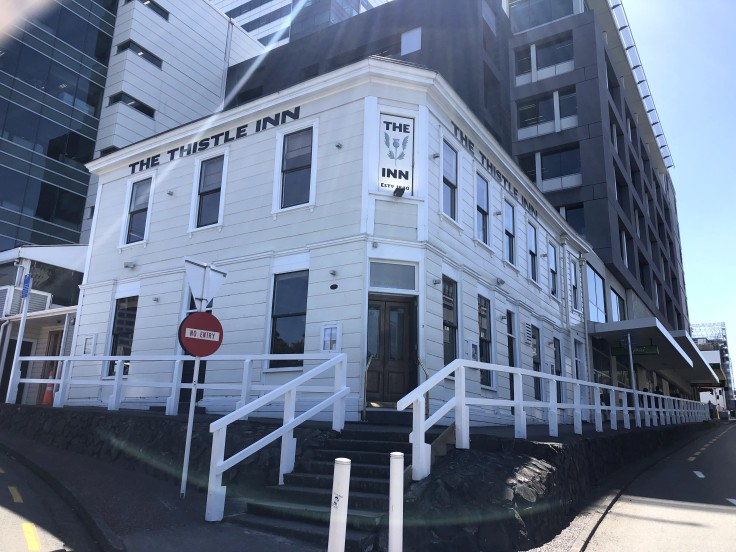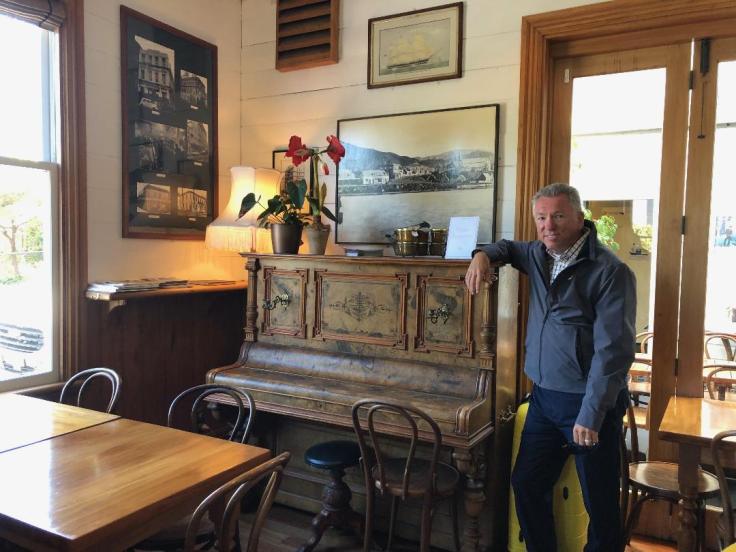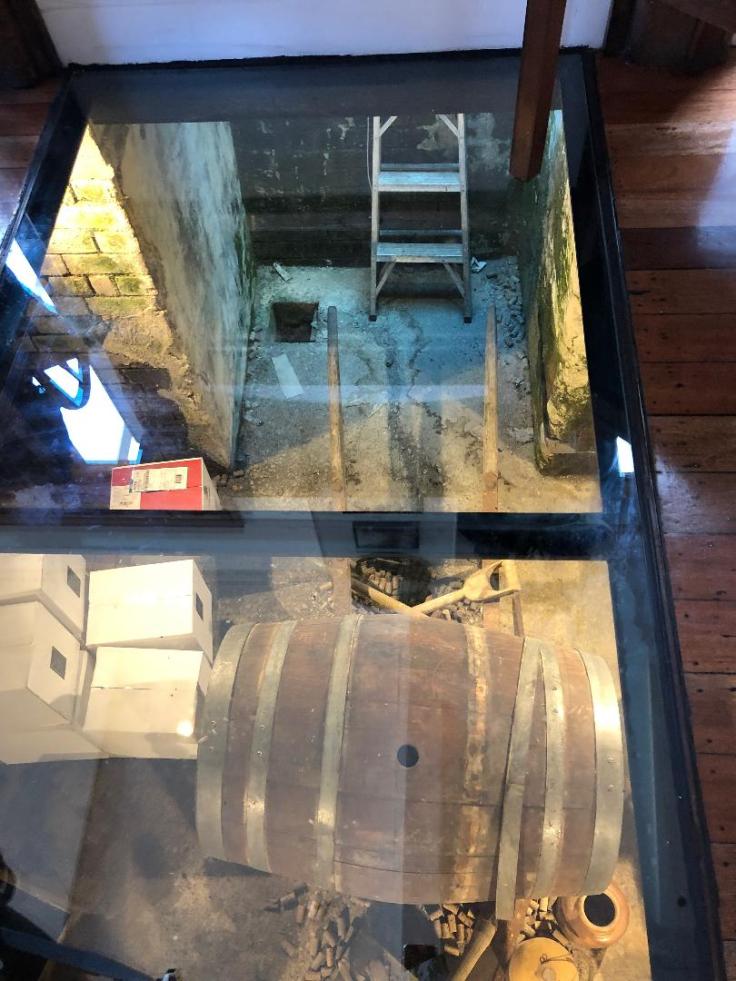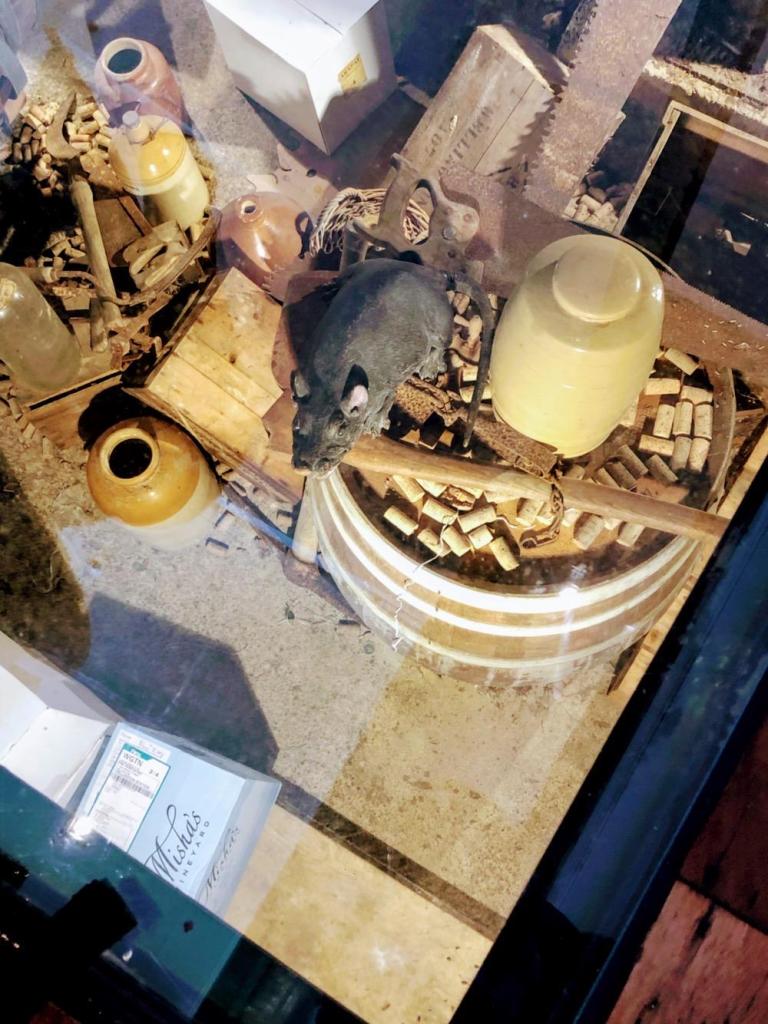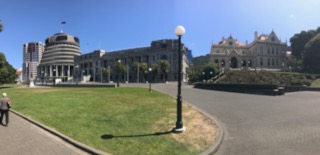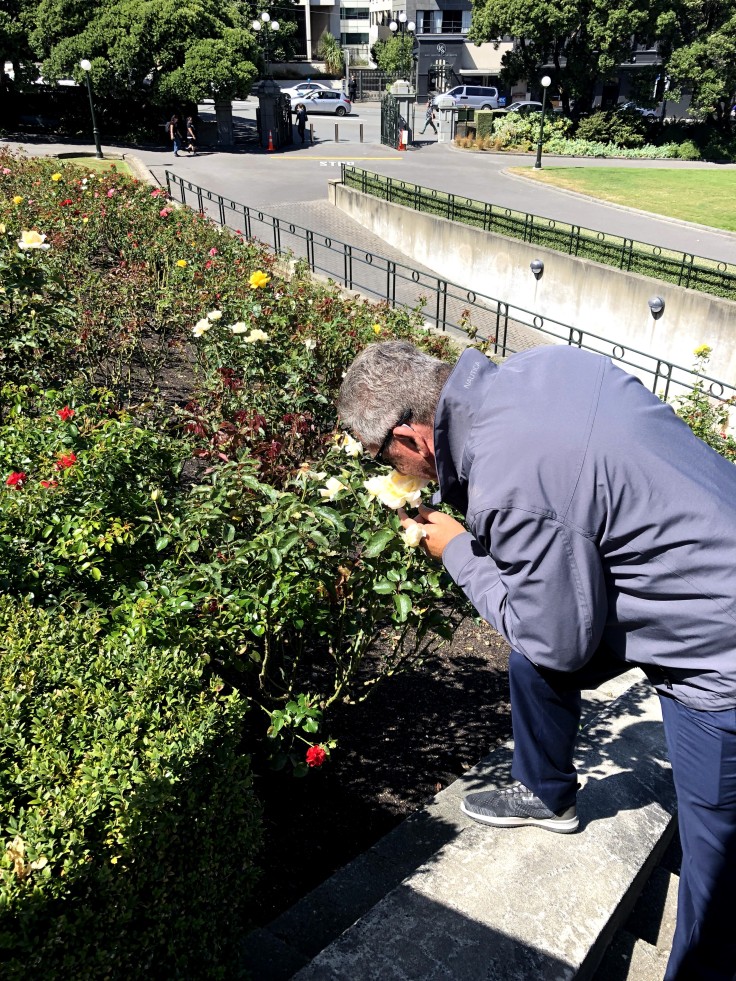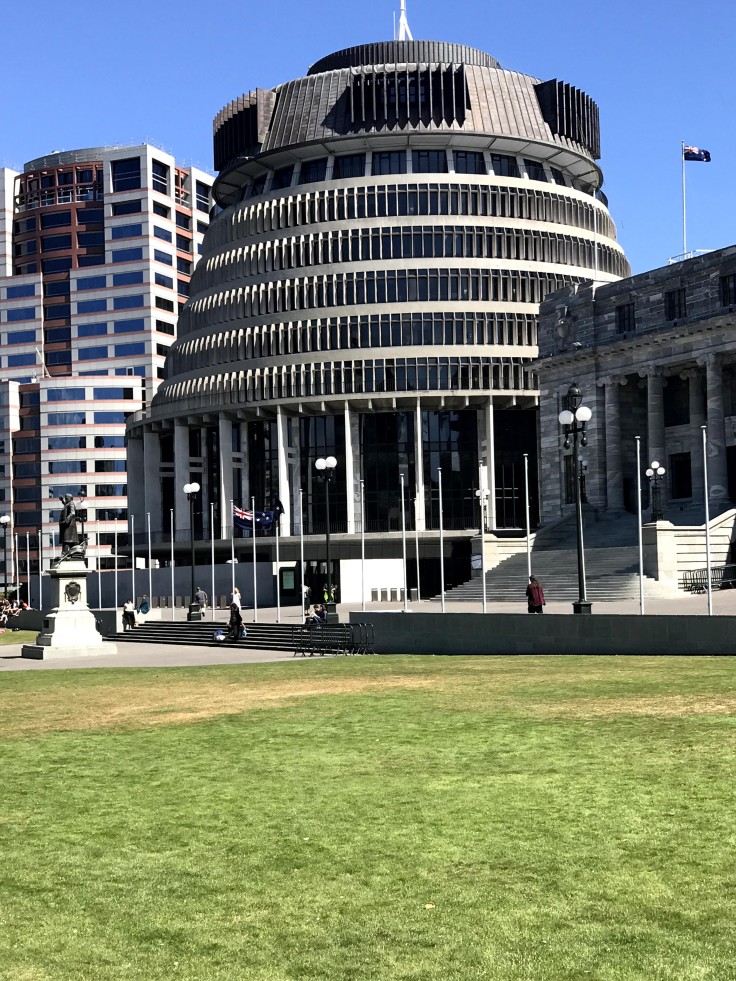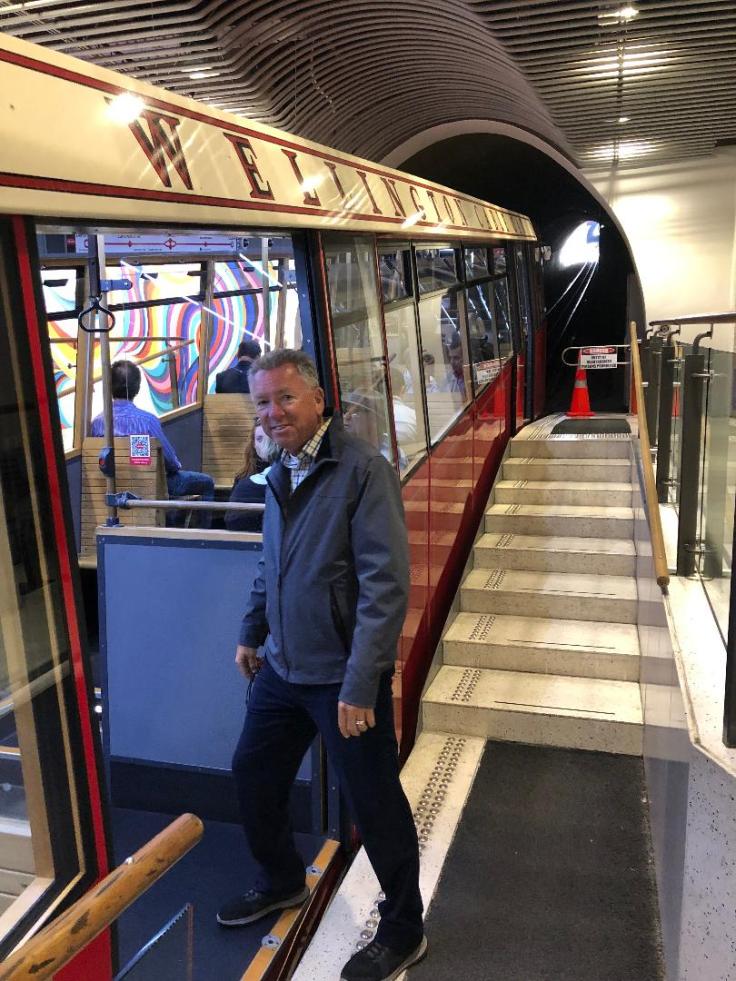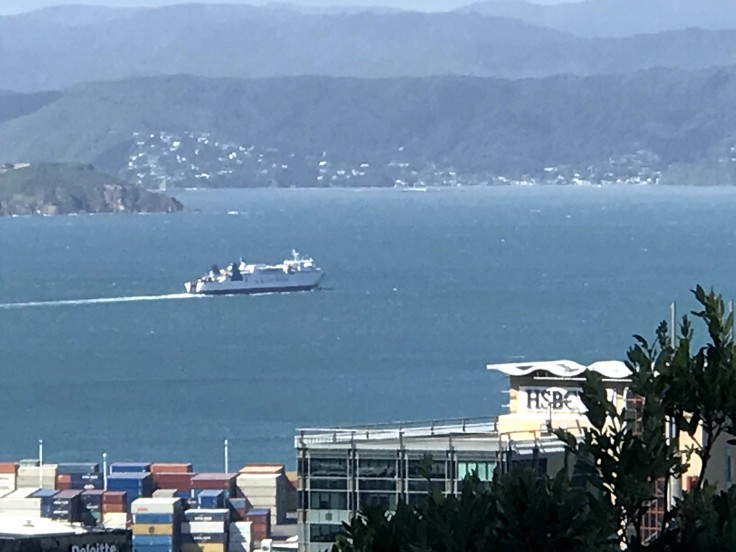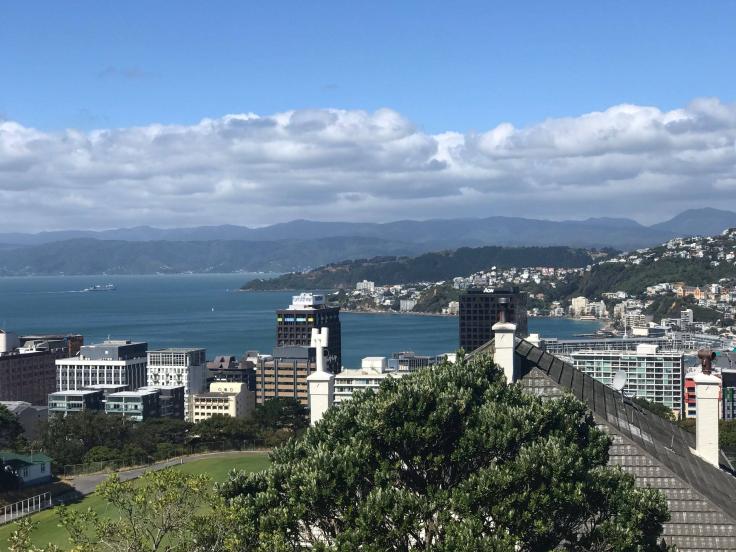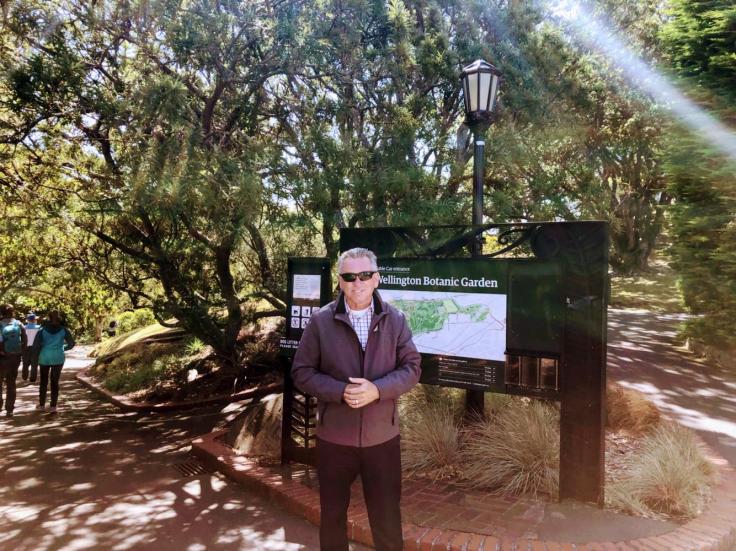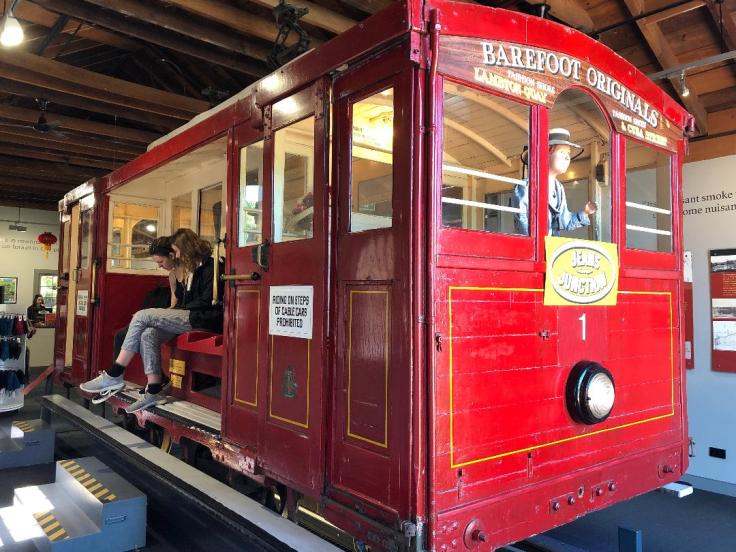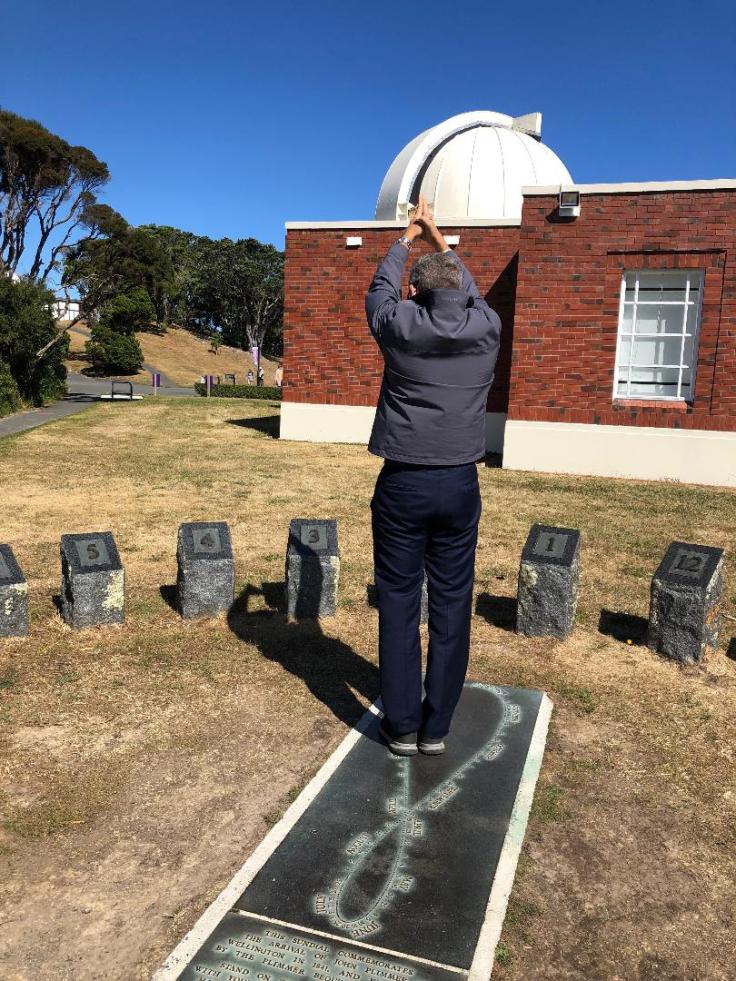After returning from the tour, we explored the town on foot. We began with the Old Government Building, built entirely of timber in 1876 to house New Zealand’s civil service. Even though it looks like a stone building on the outside, there is no stone in its structure. It’s all wood – from the original pilings that continue to support the building today to the beams in the roof. The interior woodwork is breathtaking. All the building materials came from the Kauri tree we told you about in our Bay of Islands post. Many say that if the building had been built of stone it would never have survived all the earthquakes that have hit Wellington.
Next up was Old St. Paul’s, the Provisional Cathedral of the Diocese of Wellington from 1866-1964 and another magnificent wooden structure. It too is made of Kauri wood, with stunning stained-glass windows and an interior design reminiscent of an upturned hull of a sailing ship. Services are no longer held here, but people do still use it for baptisms (that round thing with a large wooden cone-shaped top is a baptismal bath) and weddings. Outside the church are these two magnificent trees you see in the pictures. They’re everywhere, and so, so pretty!
Not far from Old St. Paul’s is The Thistle Inn, New Zealand’s second oldest pub still standing in its original location. The pub used to be located right on the pier, until that 1855 earthquake I mentioned earlier, when the land in front of the bar was lifted and the pier was relocated about a quarter of a mile down the hill. The bar still uses the original cellar and they’ve put windows in the floor so you can see what it looks like, complete with a giant RAT!
Next up was the Parliament buildings, where Ken stopped to smell the roses in the massive rose garden in front of the Parliament Library (where only members of Parliament can enter). You can guess from the pictures which building is referred to as “the Beehive,” which houses the offices of the Prime Minister and members of the Cabinet. They say it’s called that because of its looks, but we think the real reason is because this is where the Queen’s business is done.
Lastly, we rode the iconic Wellington Cable Car to the top of the hill where we found a university, botanical gardens, a tea room and an observatory. As you might imagine, it was getting late in the day, so we weren’t able to explore any of these, but we did make time for Ken to test out the human sun dial we found. The sun dial had numbers on the top half of its circle, beginning with number 9 on the right, and ending with number 8 on the left. In the center in front of the numbers was an elongated figure 8. Along the lines of the figure 8 were the names of the months and numbers 1-31. The instructions were to stand on the date that you are visiting with your back to your sun. Lift your arms over your head, clasp your hands and point straight up. The dial will match the exact time of day you are visiting. Ken did as instructed and it worked!

